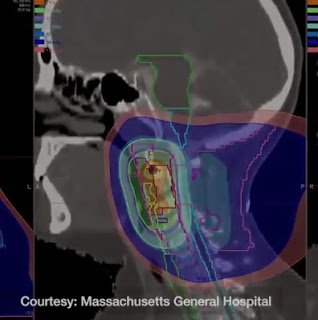Back in 2006, the state of Washington enacted a law creating the Washington State Health Technology Assessment Program. Since 2007, the state’s Health Care Authority has administered a Health Technology Clinical Committee (HTCC)–composed of eleven independent health care professionals who review information and render decisions at open public meetings. They determine whether and how selected health technologies (medical and surgical devices and procedures, medical equipment, and diagnostic tests) are covered by several state agencies. Participating state agencies include the Health Care Authority; Department of Social and Health Services (Medicaid); Labor and Industries; Department of Corrections; and Department of Veterans Affairs. In some respects, the program is analogous to the United Kingdom’s National Institute for Health and Care Excellence (NICE), which performs similar functions for the National Health Service.
Category: hospitals
Reinventing palliative care for patients with dementia
Unfortunately, certain diseases make it difficult for health professionals to deliver care in optimal ways. Those diagnosed with dementia have trouble thinking clearly and putting their thoughts together. They tend to have trouble remembering past events clearly and may find themselves disoriented and confused. The experience of dementia can often be painful not only for those living with dementia, but also for their family and friends. Because dementia disrupts the cognitive abilities of these individuals, it can make it difficult for clinicians and caregivers to deliver care that meets the needs of these patients. MORE: THE ASSISTED DYING DEBATE Mental health researchers at St. Joseph’s Healthcare Hamilton are working towards the best ways to deliver care to geriatric patients with dementia. Dr. Carrie McAiney and her research
Hospital News salutes Nursing Hero Nominee Carol Aird
Carol Aird. Carol Aird RN – Peterborough Regional Health Centre Carol graduated from the McMaster School of Nursing in 1977. Her first job was outpost nursing, providing primary healthcare to isolated communities in northern Manitoba and the Northwest Territories. In 1980, she returned to Ontario and worked as a Staff Nurse with the Victorian Order of Nurses (VON) in Toronto. Carol became a Public Health Nurse with the Haliburton Kawartha Pine Ridge (HKPR) District Health Unit in 1983. From 1985 to1989 she was a Nursing Supervisor with the HKPR Health Unit and then with the Lindsay VON. These early experiences provided Carol with the opportunity to become an advocate for the health and wellness of women and their children. Carol believed that with information and support, women could make the best
Wachter and Jha trudge through the CMS readmissions Slough of Despond
When two of my favorite observers of health care policy talk, I pay attention. So I was captured by Bob Wachter’s comment on Twitter:.@ashishkjha blog on readmissns is mastrpiece: rigorous anlysis, wise interpretatn, willing 2 change mind w/ new data Recall that Ashish was pretty hard on the readmissions penalty in the past, citing the disproportionate impact on safety net hospitals. In March 2014, I summarized an earlier piece prepared by him and Karen Joynt here:Over two years ago, I summarized a research paper from Karen E. Joynt and Ashish K. Jha at Brigham and Women’s Hospital that suggested that a one-size-fits-all readmission rate penalty policy would have the unintended consequence of harming safety net hospitals. They said: “Conclusions—Given that many poor-performing hospitals
Officers fatally shoot knife-wielding man in Lyndhurst library, police say
A Lyndhurst man wanted for failing to show up for a jail work-release program was fatally shot by police early Friday afternoon inside the Lyndhurst library after he assaulted officers with a knife, authorities said. Bergen County Prosecutor John L. Molinelli identified the suspect killed in the police-involving shooting as Kevin Allen of Lyndhurst.
Hospital News salutes Nursing Hero Nominee Shelley Wettlaufer
Shelley Wettlaufer. Shelley Wettlaufer – Mississauga Halton Community Care Access Centre I would like to nominate my nurse, and my colleague Shelley Wettlaufer whom I known for the last few months only. It is with great pleasure to nominate Shelley as an outstanding and dedicated person, who places the interests of our patients first and foremost. A registered nurse by trade, with current registration with CNO since 1995, Shelley is the team lead for West Community team with Mississauga Halton Community Care Access Centre (MHCCAC). She is also a care coordinator and the subject matter expert who provides a variety of support, advice, peer support and mentorship to her patients, team, other health care professionals involved in tertiary nursing care and also across MH CCAC. MORE: HOSPITAL NEWS
A Cerberus exit strategy for Carney Hospital: The SEIU
Jessica Bartlett at the Boston Business Journal reports that Steward Healthcare System, owned by private equity firm Cerberus Capital Management, has named Walter Ramos, CEO of DotHouse Health, a health center in Dorchester, to be the new CEO of Carney Hospital. By all accounts, Mr. Ramos is an excellent choice, with a good administrative background and understanding of the needs of the neighborhood.No, what’s more interesting about Jessica’s story is her placement of two sets of assertions. Here’s one from Steward’s president:“Carney Hospital is in the midst of an exciting resurgence. In recent years, Carney has consistently earned national awards for quality patient care, grown the number of primary care and specialist physicians, and significantly expanded available services and improved the facilities. We believe Walter
Is it in Rochester, Mayo? Or Boston?
In the post below, I report on a technical study that reviews the clinical efficacy of proton beam machines. In short, for the most common forms of cancer, there is no appreciable difference in results, but the cost of the proton beam technology greatly exceeds that of technologies generally in use around the world.The exceptions are some of the more difficult forms of cancer, and who can argue with making this modality available to the few people who can benefit from it? Such was clearly the case with 12 year old David Gerfast, who received several weeks of treatment for chordoma, a rare type of cancer that occurs in the bones of the skull and spine. As noted here: “Chordomas are generally slow growing, but are relentless
Evidence about proton beam efficacy
Source: The National Association for Proton TherapyStarting in 2011, I raised concerns about the proliferation of very expensive proton beam radiation therapy centers, made possible by investors who leverage the extra payments for use of this treatment modality that have been authorized by CMS and private insurers. I asserted, based on my contacts in the radiation therapy profession, that the use of proton beam technology offered no significant advantage over lower cost intensity-modulated radiation therapy (IMRT) in most cases. In short, I characterized proton beam developments as an example of the medical arms race, a rush by hospitals to compete on a high cost approach that offered little value to the public.Now comes a thoughtful analysis published by the Health Technology Assessment Program of the Washington
Some thoughts on overuse of sedatives, opiates, and stimulants
A recent article over at the Why is American Health Care So Expensive blog discussed the patterns in overuse of sedatives, opiates, and stimulants, noting:There is no good evidence that these medications are either safe or effective when used long term. In fact there is good evidence that they are NOT safe, and quite a bit of circumstantial evidence that they are not effective. We prescribe many times the number of controlled substances now than we did a decade ago, and overall Americans are not less anxious or less in pain or better able to concentrate than they were before. Those of us who prescribe opiates to patients with chronic pain very rarely see the pain become significantly more manageable though we do see the patients
Do they deserve a medal?
The United Hospital Fund has posted a quarter page ad in the New York Times, entitled “They deserve a medal.” The ad celebrates hospital trustees whose “leadership and dedication make life better for all New Yorkers,” and there will be a presentation in their honor at the Waldorf-Astoria. This is an annual event by the UHF.I firmly believe that hospital trustees are dedicated and thoughtful folks, who devote time, energy, and money to support local institutions. We should indeed be grateful for their devotion to the cause. But it’s been my experience that many hospital governing boards fail to address fully the patient experience. So, I wondered what, other than personal commitment, the boards of these hospitals have achieved on that front. I








